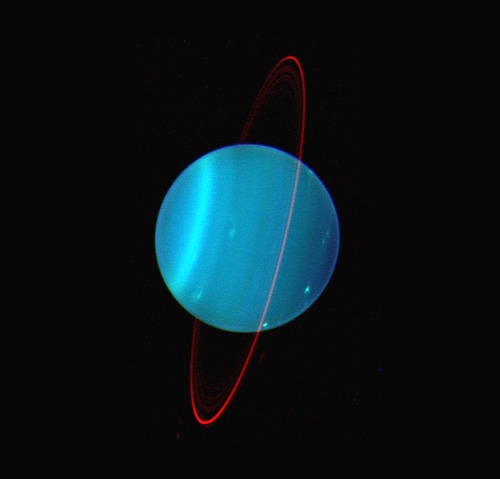Delightfulskywalker - 🥀

More Posts from Delightfulskywalker and Others
Star Wars is Life



Insomnia is his mind’s revenge for all the tricky thoughts he has carefully avoided during the daylight hours.
The Course of Love by Alain de Botton










THE MANDALORIAN SEASON ONE (2019)

leave me alone
Stephen Hawking‘s life proves what we should all know to be true: that intelligence without compassion is meaningless, and that every person who is truly intelligent knows caring deeply for others is the smartest choice a person can make
Ten interesting facts about Uranus
Like the classical planets, Uranus is visible to the naked eye, but it was never recognised as a planet by ancient observers because of its dimness and slow orbit. Sir William Herschel announced its discovery on 13 March 1781, expanding the known boundaries of the Solar System for the first time in history and making Uranus the first planet discovered with a telescope.

1° Uranus is the seventh planet from the Sun. It has the third-largest planetary radius and fourth-largest planetary mass in the Solar System. Uranus is similar in composition to Neptune, and both have different bulk chemical composition from that of the larger gas giants Jupiter and Saturn.

2° Like all of the giant planets, Uranus has its share of moons. At present, astronomers have confirmed the existence of 27 natural satellites. But for the most part, these moons are small and irregular.

3° Uranus’ moons are named after characters created by William Shakespeare and Alexander Pope. These include Oberon, Titania and Miranda. All are frozen worlds with dark surfaces. Some are ice and rock mixtures. The most interesting Uranian moon is Miranda; it has ice canyons, terraces, and other strange-looking surface areas.

4° Only one spacecraft in the history of spaceflight has ever made a close approach to Uranus. NASA’s Voyager 2 conducted its closest approach to Uranus on January 24th, 1986, passing within 81,000 km of the cloud tops of Uranus. It took thousands of photographs of the gas/ice giant and its moons before speeding off towards its next target: Neptune.

5° Uranus has rings: All the gas and ice giants have their own ring systems, and Uranus’ is the second most dramatic set of rings in the Solar System.

6° Uranus makes one trip around the Sun every 84 Earth years. During some parts of its orbit one or the other of its poles point directly at the Sun and get about 42 years of direct sunlight. The rest of the time they are in darkness.

7° All of the planets in the Solar System rotate on their axis, with a tilt that’s similar to the Sun. In many cases, planet’s have an axial tilt, where one of their poles will be inclined slightly towards the Sun. But the axial tilt of Uranus is a staggering 98 degrees! In other words, the planet is rotating on its side.

8° Uranus is approximately 4 times the sizes of Earth and 63 times its volume.

9° Uranus is blue-green in color, the result of methane in its mostly hydrogen-helium atmosphere. The planet is often dubbed an ice giant, since 80 percent or more of its mass is made up of a fluid mix of water, methane, and ammonia ices.

10° Uranus hits the coldest temperatures of any planet. With minimum atmospheric temperature of -224°C Uranus is nearly coldest planet in the solar system. While Neptune doesn’t get as cold as Uranus it is on average colder. The upper atmosphere of Uranus is covered by a methane haze which hides the storms that take place in the cloud decks.
source 1, source 2, source 2
Images credit: NASA

The Wichita Daily Eagle, Kansas, September 1, 1909

-
 liveandletlivex reblogged this · 4 months ago
liveandletlivex reblogged this · 4 months ago -
 elliescaptions liked this · 1 year ago
elliescaptions liked this · 1 year ago -
 pixelatedsnuggles liked this · 1 year ago
pixelatedsnuggles liked this · 1 year ago -
 koinwniologa liked this · 2 years ago
koinwniologa liked this · 2 years ago -
 colddarkcreators liked this · 2 years ago
colddarkcreators liked this · 2 years ago -
 featheredneststudio liked this · 2 years ago
featheredneststudio liked this · 2 years ago -
 mmmabxspaced reblogged this · 2 years ago
mmmabxspaced reblogged this · 2 years ago -
 mmmabxspaced liked this · 2 years ago
mmmabxspaced liked this · 2 years ago -
 bitchspxce liked this · 2 years ago
bitchspxce liked this · 2 years ago -
 spondulics reblogged this · 2 years ago
spondulics reblogged this · 2 years ago -
 l-ongitude-la-titude liked this · 2 years ago
l-ongitude-la-titude liked this · 2 years ago -
 ratiyaan liked this · 2 years ago
ratiyaan liked this · 2 years ago -
 crazyalien87 reblogged this · 3 years ago
crazyalien87 reblogged this · 3 years ago -
 crazyalien87 liked this · 3 years ago
crazyalien87 liked this · 3 years ago
"Hope is like the sun. If you only believe it when you see it, you'll never make it through the night." -Princess Leia
286 posts
